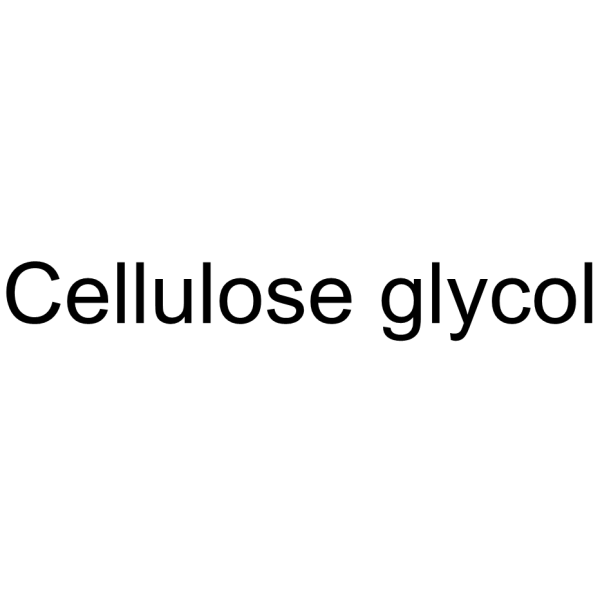Powder: -20°C for 3 years | In solvent: -80°C for 1 year


Hydroxyethyl cellulose (2-Hydroxyethyl cellulose) is a nonionic water-soluble modified cellulose polymer used as a thickener in water-soluble cosmetics and personal care formulations.

| Pack Size | Availability | Price/USD | Quantity |
|---|---|---|---|
| 1 g | In stock | $ 42.00 |

| Description | Hydroxyethyl cellulose (2-Hydroxyethyl cellulose) is a nonionic water-soluble modified cellulose polymer used as a thickener in water-soluble cosmetics and personal care formulations. |
| In vitro | Hydroxyethyl cellulose demonstrates outstanding cryoprotective effects on lactate dehydrogenase (LDH) during freeze-thaw cycles and significant lyoprotective effects throughout the freeze-drying process. The annealing process minimally affects its stabilizing capabilities. However, the lengthy reconstitution times for hydroxyethyl cellulose lyophilisates are significantly reduced by adding the surfactant Tween 80 before freeze-drying. Furthermore, hydroxyethyl cellulose is utilized to stabilize graphene oxide in physiological solutions, enhancing its suitability for targeted drug delivery. It effectively stabilizes graphene oxide in electrolyte solutions, with the stabilization mechanism being influenced by the hydroxyethyl cellulose content. This content is crucial in tailoring the nanohybrid for specific applications, whether for controlled drug release or folate-targeted drug delivery. |
| Synonyms | Cellulose hydroxyethyl ether, 2-Hydroxyethyl cellulose |
| Molecular Weight | N/A |
| CAS No. | 9004-62-0 |
Powder: -20°C for 3 years | In solvent: -80°C for 1 year
H2O: 9.09 mg/mL, Heating to 93℃ is recommended.
DMSO: 1 mg/mL (insoluble or slightly soluble)
You can also refer to dose conversion for different animals. More
bottom
Please see Inhibitor Handling Instructions for more frequently ask questions. Topics include: how to prepare stock solutions, how to store products, and cautions on cell-based assays & animal experiments, etc.
Hydroxyethyl cellulose 9004-62-0 Others inhibit Inhibitor Cellulose hydroxyethyl ether 2-Hydroxyethyl cellulose inhibitor
